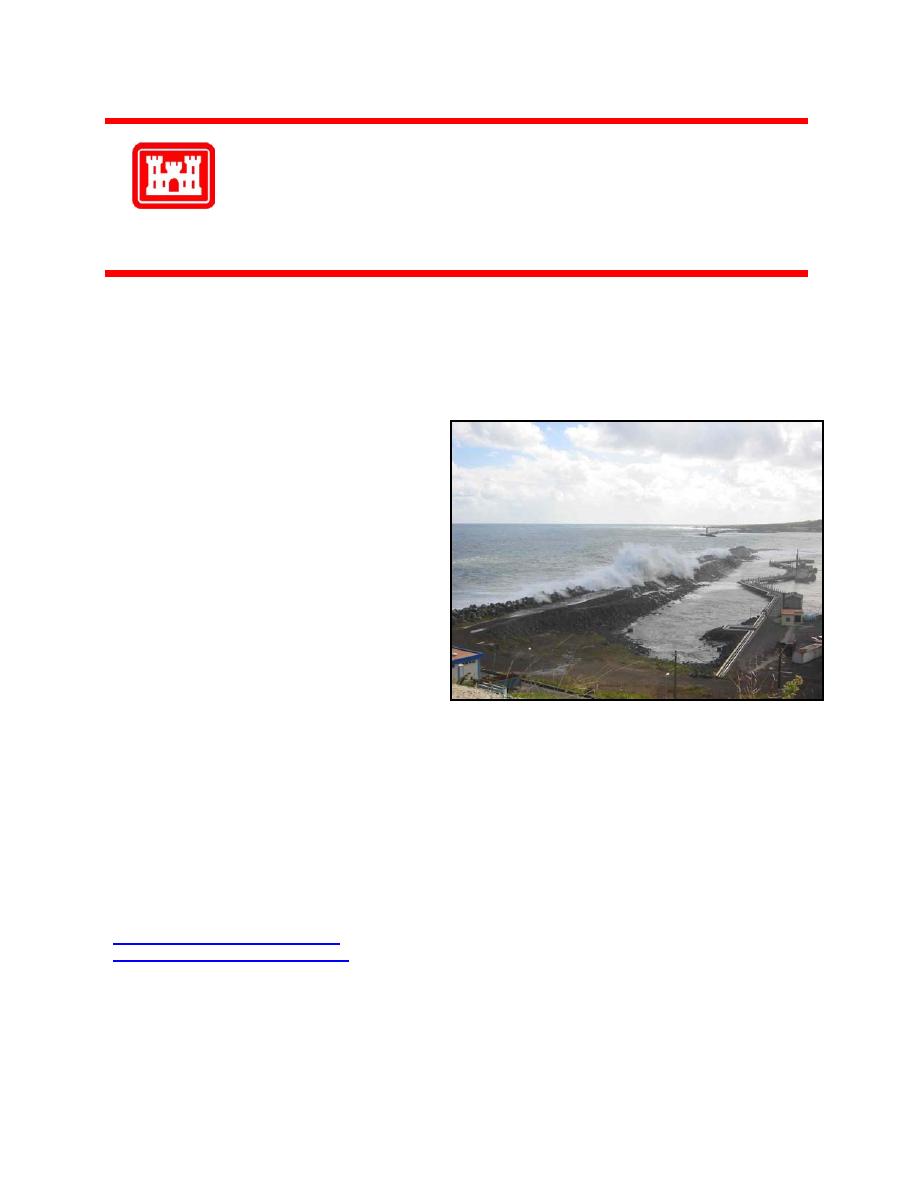
Fact Sheet
US Army Corps of Engineers
U.S. Army Engineer Research and Development Center
November 2003
Public Affairs Office
3909 Halls Ferry Road
Vicksburg, MS 39180-6199
(601) 634-2504
http://www.wes.army.mil
Breakwater Repair at Lajes Air Force Base, Lajes, Azores
Purpose: Two-dimensional and three-dimensional physical model studies are being conducted to study repair sce-
narios for the breakwater at Lajes Air Force Base, Lajes, Azores. In addition, wave transmission into the lee of the
breakwater is being measured for various breakwater repair scenarios. The intent of the study is to determine the
optimum breakwater repair plan.
Background: The Azores islands are located in the
mid-Atlantic Ocean. Praia da Vitoria is a bay located
on the eastern coast of the island of Terceira in the
Azores. The harbor has direct exposure to severe open
Atlantic storms from the east. A breakwater was con-
structed in 1963 on the north side of the bay entrance to
provide safe refuge and port for U.S. ships arriving at
Lajes Air Force Base. A wharf is located directly in the
lee of the breakwater, as shown on the attached photo-
graph. The breakwater was originally armored with 15
t tetrapods. The armor layer has sustained significant
damage beginning during initial construction. Repairs
to the structure were undertaken in 1963, 1964, 1966,
1970, 1973, 1985, 2002, and 2003. The structure con-
tinues to deteriorate. In 2001, the U.S. Air Force em-
ployed the U.S. Navy to develop a permanent repair for the structure.
Facts: At the request of the U.S. Navy, two 1:56-scale physical hydraulic models were designed and constructed at
the U.S. Army Engineer Research and Development Center by the Coastal and Hydraulics Laboratory to study re-
pair scenarios. One model of a breakwater section was built in a 1.5-m wide by 61-m-long flume. A second model
was also constructed; a three-dimensional model of the breakwater and bay covering a region roughly 2 km by 2 km
was constructed in a directional wave basin. A 27.4-m-long multidirectional, spectral wave generator, an automated
data acquisition and control system, and capacitance-type wave gauges are being used in model operation. Modifi-
cations to the breakwaters are being tested that include a CORE-LOC and antifer cube armor layer with an optional
fronting berm of mobile stone. The design CORE-LOC weight is 31.6 t. To-date, the tested options are entirely
stable. Investigations continue to identify the least cost option.
Points of Contact: For additional information, please contact Dr. Jeffrey Melby at 601-634-2062
( ), or Mr. Dennis Markle at 601-634-3460
( )"> ).



 Previous Page
Previous Page
